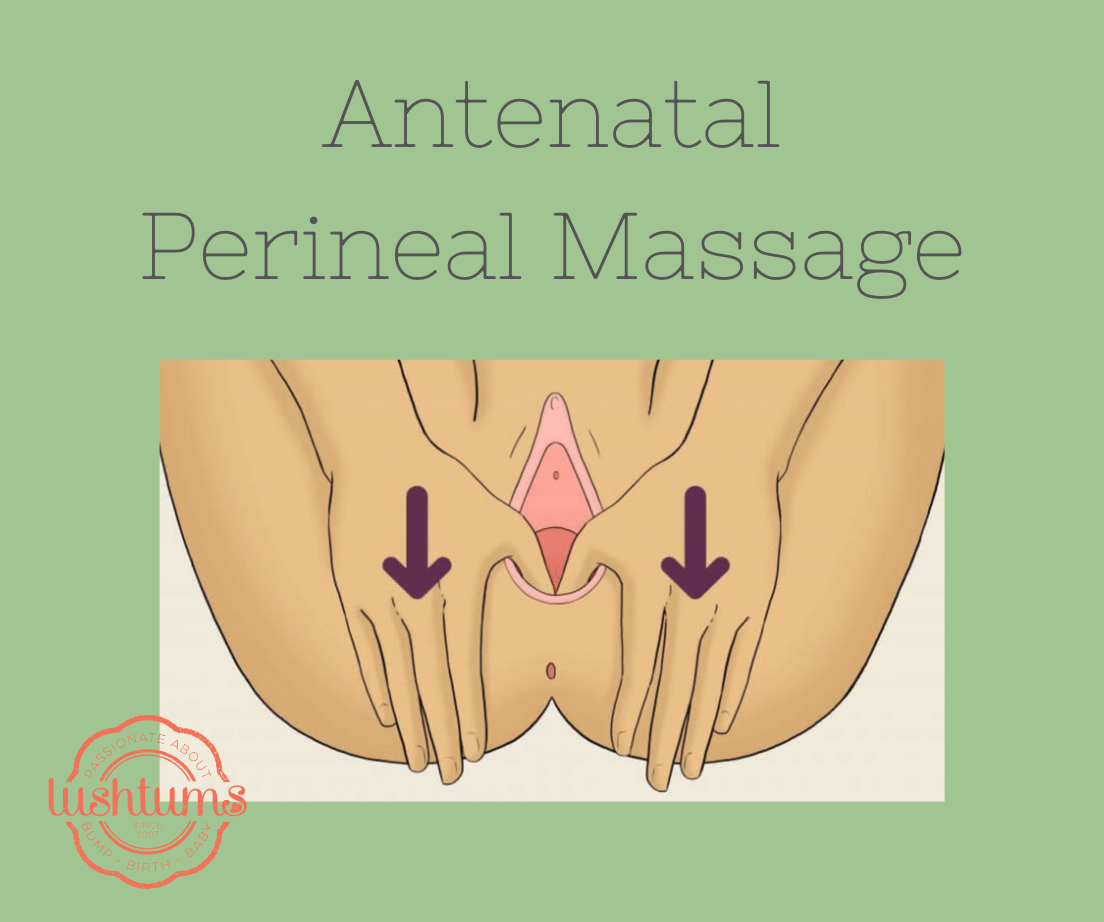Antenatal Perineal Massage
Research has shown that massaging your perineum from approximately 34 weeks into your pregnancy reduces the chance that you might damage this area during birth (with a tear or bruising). This is particularly beneficial if you are having your first baby.
Antenatal perineal massage can also help with your recovery after the birth, particularly if you are having your second or further babies.
What is the Perineum and pelvic Floor?
The perineum is the area of tissue between your vagina and anus (opening to your back passage). It connects with the muscles of the pelvic floor. The pelvic floor is a hammock of muscles which supports your pelvic organs, such as your bladder and bowels.
The perineum is especially important in women. Stretching or tearing of the perineum during childbirth can affect the support that your pelvic floor gives you at the back wall of your vagina. This can mean that you are more likely to have a prolapse (or dropping down) of your uterus. A weak pelvic floor can also affect the control you have over your bladder and bowels. Damage to your perineum might also lead to discomfort and pain during sexual intercourse.
Approximately 85% of women will have some degree of perineal tear during vaginal birth.
What is Perineal Massage?
Perineal massage is a way of preparing your perineum to stretch more easily during childbirth. During birth, the perineal tissue needs to relax and open to allow your baby to pass through your vagina.
Advantages of perineal massage:
It increases the elasticity (stretchiness) of the perineum. It improves the perineum’s blood ow and ability to stretch more easily and less painfully during the birth of your baby.
Tears in the perineum are less likely and you are less likely to need an episiotomy. This is a cut to the perineum that is sometimes performed to speed up the birth of your baby or to try to prevent a more severe tear.
It helps you focus on the feeling of letting your perineum open up.
Your perineum is less likely to be painful after the birth of your baby.
It can be particularly helpful if you have previous scar tissue or a rigid perineum, which can occur in some horse riders or dancers. But all women can bene t from doing perineal massage.
When should I start and how do I do it?
You can start at any time from 34 weeks of your pregnancy. Perineal massage can be done by you or your partner, if you are comfortable with this. You may want to start off doing the massages to begin with, then invite your partner to massage as you get nearer to the time of the birth.
When should I do it?
A good time is during or after a bath or shower because blood vessels in the area are dilated. This makes the perineum softer and more comfortable to touch. You are also already more relaxed!
We suggest using a small amount of unscented, organic oil, for example, olive, sun ower or grape seed oil, to lubricate the area and make the massage more comfortable. You can also use an unscented personal lubricant, such as K-Y JellyTM. Don’t use synthetic oils such as baby oil or petroleum jelly (Vaseline). Make sure your hands are clean before you start.
Comfortable positions include:
Propped up with pillows on a bed or sofa with your knees bent out and supported.
Resting back in the bath with one leg up on the side. Then change legs.
Standing under a warm shower with one leg up on a stool. Then change legs.
Sitting on the toilet.
Technique
Get comfortable and relaxed in a place where you feel safe, secure and will not be interrupted.
You might find it easier to use a mirror for the first few tries, to help you see what you are doing.
Place one or both thumbs on and just within the back wall of your vagina, resting one or both forefingers on your buttocks. You may prefer to use only one hand.
Pressing down a little towards your rectum (back passage), gently massage by moving your thumb(s) and fore nger(s) together upwards and outwards then back again, in a rhythmic ‘U’ shaped movement. You are aiming to massage the area inside your vagina, rather than the skin on the outside. However, you may still feel the stretching sensation on the skin on the outside.
Perineal massage should be comfortable but you will also feel a stretching feeling. This is similar to how your perineum will open up as you give birth to your baby.
Focus on relaxing your perineum as much as possible during the massage.
The massage can last as long as you wish, but aim for around ve minutes at a time.
With time and practice, as your perineum becomes more elastic, you will increase your ability to relax and can increase the pressure towards your rectum. Being able to relax through this feeling of increased pressure will help you to relax as you feel the pressure in labour and your baby’s head is about to be born.
Repeat as often as you wish. For most benefit, aim for a massage every day or every other day.
Do not do perineal massage if you have:
• vaginal herpes
• thrush or any other vaginal infection.
If you feel pain at any point, stop and try again another time. If you continue to and this painful speak with your midwife or GP and they will help you to check your technique.
Information from the NHS

